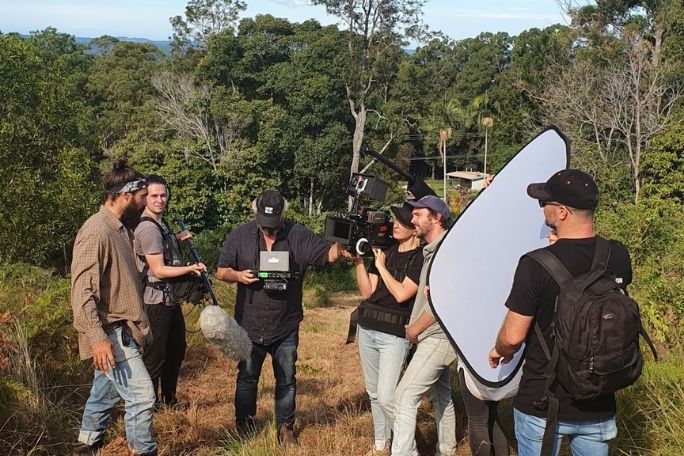Lesson summary
In this lesson, students will view the film “Regenerating Australia” and then watch a video interview with the writer and director, Damon Gameau. They will respond to a set of questions that will prompt them to consider the intended impact of the film and the structural and/or visual choices that were made in order to create this impact. Students will use their knowledge on regeneration to create a news report about a real or imagined example of regeneration.
Learning intentions:
Students will...
- understand how cultural perspectives and other texts can influence the construction and interpretation of news reports.
- be aware of how people, cultures, places, events, objects and concepts are represented in texts, including media texts, through language, structural and/or visual choices
- know how to create informative texts that present a point of view and advance or illustrate arguments.
Success criteria:
Students can...
- analyse a text literally, inferentially and evaluatively
- describe what “regeneration” means to them and identify examples of regeneration in their community
- create a short TV news story
- discuss how their context may influence how they create a text.
Lesson guides and printables
Lesson details
Curriculum mapping
Australian curriculum content descriptions:
Year 9 English:
- Analyse how the construction and interpretation of texts, including media texts, can be influenced by cultural perspectives and other texts (ACELY1739)
- Create imaginative, informative and persuasive texts that present a point of view and advance or illustrate arguments, including texts that integrate visual, print and/or audio features (ACELY1746).
Year 10 English:
- Analyse and evaluate how people, cultures, places, events, objects and concepts are represented in texts, including media texts, through language, structural and/or visual choices (ACELY1749)
- Create sustained texts, including texts that combine specific digital or media content, for imaginative, informative, or persuasive purposes that reflect upon challenging and complex issues (ACELY1756).
Syllabus outcomes: EN5-8D, EN5-1A.
General capabilities: Literacy.
Cross-curriculum priority: Sustainability, Critical and Creative Thinking.
Relevant parts of Year 9 achievement standards:
Students analyse the ways that text structures can be manipulated for effect. They evaluate and integrate ideas and information from texts to form their own interpretations. They select evidence from texts to analyse and explain how language choices and conventions are used to influence an audience. Students create texts that respond to issues, interpreting and integrating ideas from other texts.
Relevant parts of Year 10 achievement standards:
Students evaluate how text structures can be used in innovative ways by different authors. They develop and justify their own interpretations of texts. Students create a wide range of texts to articulate complex ideas. They make presentations and contribute actively to class and group discussions, building on others’ ideas, solving problems, justifying opinions and developing and expanding arguments.
Unit of work: Regenerating Australia
Teaching Time: 180 mins (this lesson could be split over a number of teaching periods).
Level of teacher scaffolding: High – facilitate class discussions, support students to plan, edit and publish a text.
Resources required
- A device capable of editing a short film
- A device capable of presenting a video to the class.
- Access to the film Regenerating Australia
- Camera or similar recording device (such as a tablet or smartphone)
- Interview with the director Damon Gameau handout
- Regeneration Factsheet – one copy per student
- Student Worksheets – one copy per student
- Tips for creating a news report handout.
Skills
This lesson is designed to build students’ competencies in the following skills:
- Communication
- Creativity
- Digital literacy
- Initiative
- Social skills
Additional info
Regenerating Australia is a Regen Studios film developed and produced in association with WWF-Australia. Cool.org and Regen Studios would like to acknowledge the generous contributions of Shark Island Foundation, Documentary Australia Foundation, and our philanthropic partners in the development of these teaching resources.


Welcome back!
Don't have an account yet?
Log in with:
By signing up to Cool.org you consent and agree to Cool's privacy policy to
store, manage and process your personal information. To read more, please see
our privacy policy here(Opens in new tab).
Create your free Cool.org account.
Many of our resources are free, with an option to upgrade to Cool+ for premium content.
Already have an account?
Sign up with:
By signing up to Cool.org you consent and agree to Cool's privacy policy to
store, manage and process your personal information. To read more, please see
our privacy policy here(Opens in new tab).